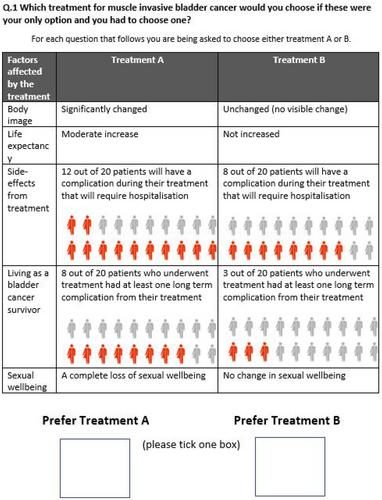When faced with treatment options, patients are asked to participate in decision-making. We sought to determine which treatment aspects matter most for individuals treated for muscle invasive bladder cancer (MIBC), with an aim to improve understanding of patient preferences and what trade-offs patients are willing to accept. Our study consisted of a discrete choice experiment (DCE): a type of questionnaire used to elicit preferences in the absence of real-world choice.
The DCE had five attributives, each with three levels. Participants were asked to complete a questionnaire in which they were asked to choose between two hypothetical MIBC treatments. The data were analysed using a conditional logit model, and preferences for, and trade-offs between, attributes were estimated.
We recruited patients with MIBC who had either already completed, were undergoing or had yet to commence radical treatment for MIBC (n = 60). Participants indicated a strong preference for treatments that increased their life expectancy (p = <0.001), had a lower risk of long-term complications (p = <0.001) and less changes to their body image (p = <0.001). Changes to sexual wellbeing (p = 0.09) or an increase in acute side effects (p = 0.99) did not influence preferences. Patients were willing to accept treatments with higher risk of long-term complications to improve their life expectancy or body image.
When deciding on the type of treatment, increased life expectancy is the most important consideration for people with MIBC. The risk of long-term complications and changes to overall body image as a result of treatment are also important. Our study also highlighted that patients are willing to accept a higher risk of long-term complications to improve other treatment outcomes. Understanding patient preferences is important for shared decision-making, which has an impact on quality of care for people living with MIBC.


